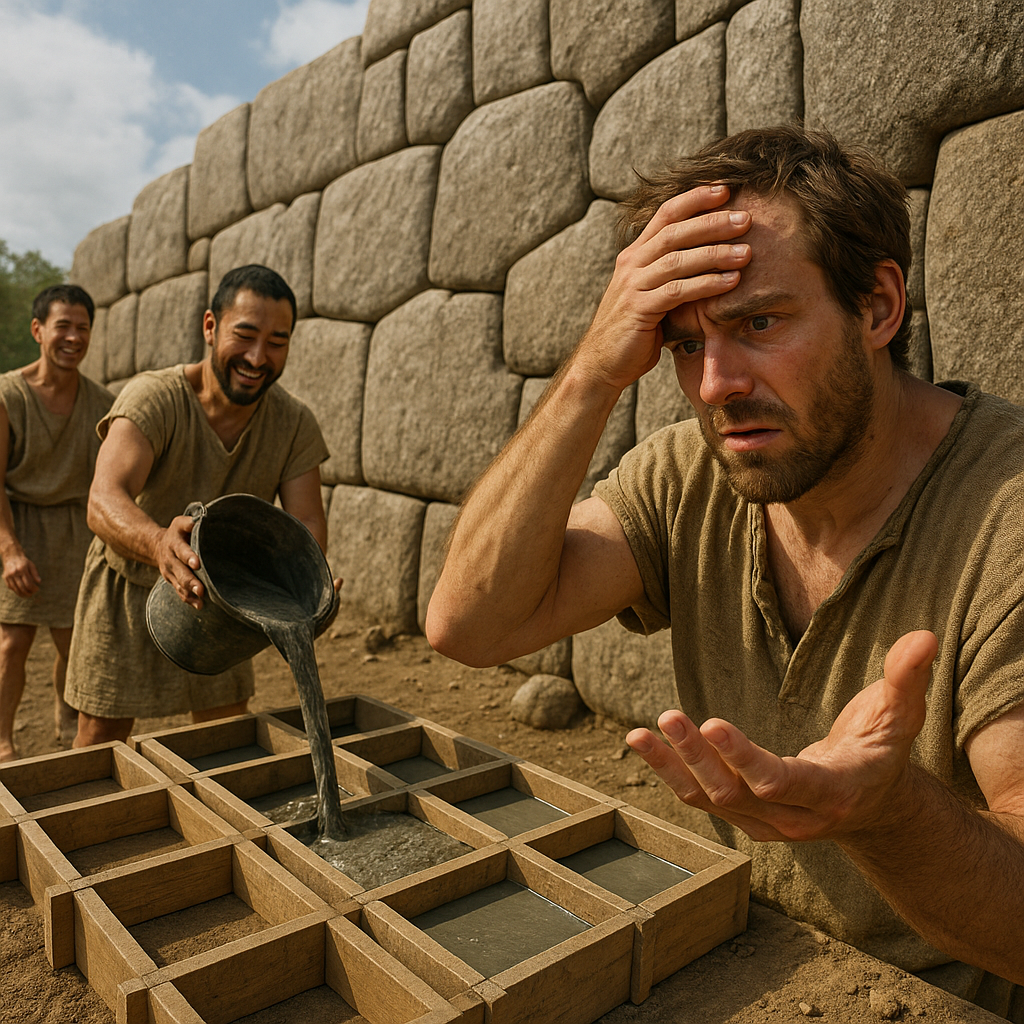
For years, mainstream archaeology has insisted that ancient civilizations cut, carved, and perfectly fitted impossibly massive stones using nothing more than copper tools, stone hammers, and ingenuity. This belief system is held together by a strange combination of faith and repetition—a kind of cultural muscle memory that tells us, “They must have done it this way, because that’s what we were told.”
But what happens when you apply Occam’s Razor to the mystery of ancient stonework? When you strip away the assumptions, the lost scaffolding, the invisible chisels, and the superhuman patience? You get something much simpler:
They poured it.
Two Competing Theories
Let’s compare two explanations for how ancient civilizations achieved the kind of stonework that still baffles engineers today.
Option A: Cut and Fit
- Ancient people carved multi-ton stones with perfect interlocking geometry
- They had no written plans, but pulled it off over and over again
- They moved and placed these stones without cranes or modern pulleys
- They managed precise angles, compound joints, and zero mortar, using only basic tools
- No diamond tools, no factories, no blueprints, and no evidence of the tools that would be required
Option B: Poured Stone (Ancient Concrete / Geopolymer)
- Ancient people discovered a way to mix stone powders with binding agents
- They poured the mixture into molds, creating blocks in place
- Complex joints and smooth finishes were a result of shaping during the wet stage
- This technique required chemistry, not metallurgy
- Evidence includes possible mold marks, internal air pockets, and chemical analysis of certain stones
Which sounds more plausible?
The Simpler Solution
Occam’s Razor favors explanations that make the fewest assumptions. And the “cut and haul” model is loaded with assumptions: mystery tools, lost techniques, unexplained precision, and the logistics of moving 100-ton blocks.
Meanwhile, the poured stone theory requires only that ancient people:
- Understood how to grind stone (which we know they did)
- Discovered binding agents (like ash, clay, or lime)
- Used molds to shape their structures
We’re not saying they had modern concrete trucks. But if you lived in a world full of rock, water, fire, and time—you’d figure something out. You’d do it the smart way. You’d pour it.
The Real Irony
The people who scoff at the concrete theory often say things like, “Well, where’s the factory?”
Here’s the kicker: if they did carve and place these stones, where are the tools? Where are the saws that shaped diorite? Where are the workspaces, quarries, scaffolds, and ramps that explain the logistics? If you want to believe in carving, you have to believe in an entire missing industrial ecosystem.
That’s not skepticism—that’s mythology with a straight face.
Cultural Resistance
It’s not about evidence—it’s about comfort. Believing that ancient people discovered a lost form of concrete disrupts everything we think we know about technological progress. It implies they knew something we forgot. And if we forgot something that big, what else don’t we know?
But maybe it’s time to stop fearing the simplest answer. Maybe it’s time to stop trying to chisel every mystery into place.
They didn’t have to be magicians. They just had to be smart.
And smart people, even 10,000 years ago, might have realized:
Why break your back hauling a block… when you can pour one in place?


